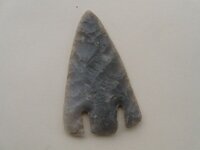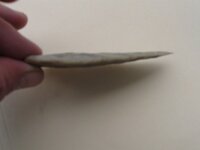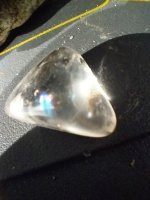naturegirl
Bronze Member
- Mar 21, 2009
- 2,356
- 402
Hi y'all! Newbie here, second attempt at posting, apologies if both attempts show up. I found this spear(?) head in NE okla. It's 3 1/2" long x 2" wide, transparent along the thin edges with dark spots in the transparent part. Can't see the dark spots un less you hold it up to the light. From online reading, I guess it to be a Calf Creek made of frisco chert. What say you? I whooped, I hollared, I danced, and got down on my kees to thank the Lord when I found it. Boy that was fun!
naturegirl
naturegirl
Attachments
Upvote
0





 Too funny. NG, listen to Matt he knows what he is talking about. I was very fortunate to have Matt teach me lots of topics concerning artifacts/IDing, when I first started out.( I still pick Matts brain) I am so greatful for that, otherwise I would have been none the wiser with everyones different views
Too funny. NG, listen to Matt he knows what he is talking about. I was very fortunate to have Matt teach me lots of topics concerning artifacts/IDing, when I first started out.( I still pick Matts brain) I am so greatful for that, otherwise I would have been none the wiser with everyones different views 

 ( No Offence ppl, just gets confusing as a newbie, in 12 month NG will have her own thoughts on the matter)
( No Offence ppl, just gets confusing as a newbie, in 12 month NG will have her own thoughts on the matter) 
